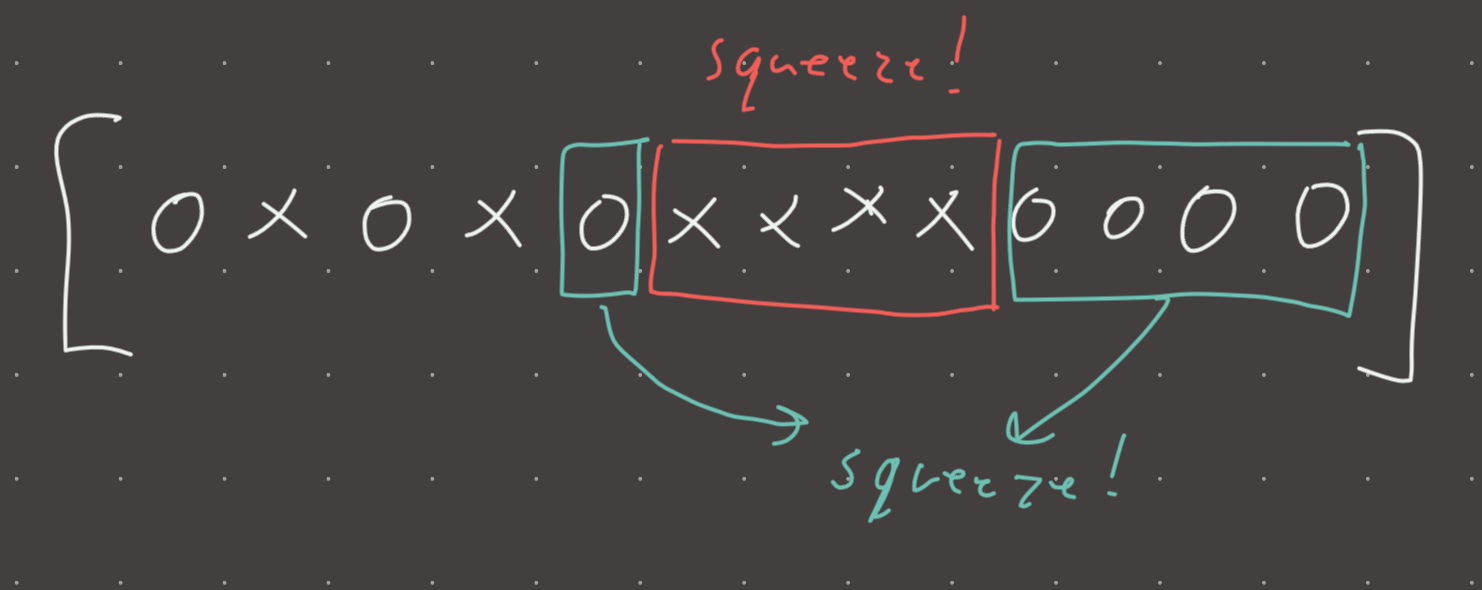DSA: subarray, monotonic stack
Intuition
If something in the future could have impact on the present, potentially use a stack.
For example in the Valid parentheses problem, a current ( may be closed by a future ), but we don’t know if or when that would happen. For example in () the first open parentheses is closed immediately, but in (((((()))))), the first open parentheses is closed at the end, and in (((((, the first parentheses is never closed.
Another intuition is deleting/collapsing/squeezing subarrays if that looks like its relevant to the problem. for example here ( ()() ) we can squeeze out ()() to get ( squeezed was here ). The squeezing pattern is visually intuitive.
The stack is useful when we think about problems where we have to connect non-contiguous subarrays.
Implementation
def valid_parentheses(s):
stack = []
for char in s:
if char == '(':
stack.append('(')
else:
if stack:
stack.pop()
else:
return False
return len(stack) == 0Visual

